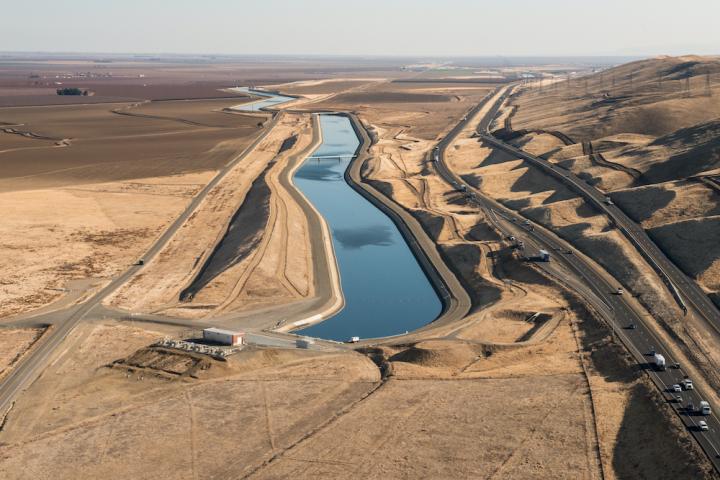A team of researchers have developed a framework to evaluate complex connections between water and energy, and options for adaptations in response to an evolving climate.
Their study, “Evaluating cross-sectoral impacts of climate change and adaptations on the energy-water nexus: A framework and California case study,” was published in the open-access journal Environmental Research Letters. The team is made up of scientists from the Department of Energy’s Lawrence Berkeley National Laboratory, UC Berkeley, and UC Santa Barbara.
Although many studies have been done on how climate change could affect the water and energy sectors, those studies were not typically looking at interactions and feedbacks between the two, said lead author Julia Szinai of Berkeley Lab’s Climate and Ecosystem Sciences Division. The newly published paper develops a framework that identifies how climate change affects these coupled water and electricity systems, and potential adaptations to future gaps in supply and demand.
The researchers said this is one of the first studies to show that water sector adaptation can have as large an impact on the electricity sector as the direct effect of climate change itself.
In applying the framework to California, which relies on snowpack for a good deal of its water and uses large amounts of energy to move water from the northern to the southern part of the state, the researchers found two possible adaptation pathways: one that is energy intensive and one that can save both water and energy.
Reducing energy use
“One of the most important points of the paper is that adapting our water system to climate change can either significantly exacerbate electricity grid stress, or on the flip side, it could help to alleviate it,” said co-author and Berkeley Lab climate scientist Andrew Jones.
A focus on adapting the water system by using transfers of water across basins, or by using energy-intensive desalination, will make the electricity problem more difficult, he said. However, if people adapt the water system by conserving water, “it’s actually a win-win situation because you’re also reducing the energy required for water.”
Currently, about 19% of California’s electricity consumption goes toward water-related applications, such as treating it, transporting it, pumping it, and heating it. And, about 15% of in-state electricity generation comes from hydropower sources.
The state has already seen some impacts that climate change could have on these interdependent water-energy systems. For example, the researchers aid that extended droughts and reduced snowpack have resulted in spikes in electricity consumption from groundwater pumping and hydropower deficits.
Climate change impacts
The researchers also found that the greatest direct climate change impact on California’s electricity sector will likely come from two factors: higher air conditioning loads and lower hydropower availability. In the water sector, the greatest and most uncertain impact of climate change is on future water supplies. In the worst case, the researchers said that available water supplies could shrink by 25%, and in the best case could grow by 46%.
The researchers said that if the state were to adapt to the worst-case water scenario by choosing the most energy-intensive technologies, it could result in an energy imbalance as large as that caused by climate change itself.
Co-author Ranjit Deshmukh, an environmental studies professor at UC Santa Barbara and faculty scientist at Berkeley Lab, said that the electricity sector could leverage its close coupling with the water sector to better balance growing amounts of wind and solar generation. For example, energy-intensive equipment such as water pumps or desalination plants could be operated during times of plentiful solar and wind energy, and turned off at other times.
The researchers are now working to link both a more detailed water resources management model and an electricity planning model to demonstrate pathways to build out electricity infrastructure in the Western U.S. when climate change impacts are included from the water sector.
This content is protected by copyright and may not be reused. If you want to cooperate with us and would like to reuse some of our content, please contact: editors@pv-magazine.com.









By submitting this form you agree to pv magazine using your data for the purposes of publishing your comment.
Your personal data will only be disclosed or otherwise transmitted to third parties for the purposes of spam filtering or if this is necessary for technical maintenance of the website. Any other transfer to third parties will not take place unless this is justified on the basis of applicable data protection regulations or if pv magazine is legally obliged to do so.
You may revoke this consent at any time with effect for the future, in which case your personal data will be deleted immediately. Otherwise, your data will be deleted if pv magazine has processed your request or the purpose of data storage is fulfilled.
Further information on data privacy can be found in our Data Protection Policy.